Bringing 1980's cult TV series The Fall Guy was always going to be a challenge in the modern era of CG stunt doubles, not least because the team at Cinesite (which previously worked on Teenage Mutant Ninja Turtles: Mutant Mayhem), in a manner, needed to help create VFX within VFX as the film is set on the set of imagined movies.
In the original show Lee Majors starred as Colt Seavers, a stuntman who found time between being 'blown up for Raquel Welch' and making 'Redford such a star' to solve crimes and catch criminals. It was a show built around the celebration of practical stunts and the magic of making movies.
Cinestite's Jennifer Meire, who supervised the visual effects on new movie The Fall Guy says the team wanted to honour the pitch of the '80s show. "The original TV series of The Fall Guy from the 1980s was known for its practical stunts, so our goal was to help honour that legacy," she says. "The clue to the role of VFX is really in the title of the film - we always knew that the focus would be on the stunts. We worked closely with the production team in order to blend the practical and digital effects and what we created was always invisible. Our digital support was primarily there to enhance the action, rather than the atmosphere."
The original TV series of The Fall Guy from the 1980s was known for its practical stunts, so our goal was to help honour that legacy
Jennifer Meire, VFX supervisor, Cinesite
Cinesite teamed up with Leitch, VFX Supervisor Matt Sloan, and the stunts team to bring the film's jaw-dropping stunts to life. The collaboration resulted in around 355 visual effects shots, meticulously overseen by Cinesite VFX supervisor Jennifer Meire.
The plot of The Fall Guy centres on the battle-hardened stuntman Colt Seavers, who embarks on a quest to solve the mystery of Tom Ryder’s disappearance, the star of the movie Metalstorm that he's working on.
As you might expect, the visual effects in The Fall Guy are heavily skewed towards practical stunts and SFX. Leitch, with his rich history as a stuntman in films like Fight Club, Ocean’s Eleven and Mr. and Mrs. Smith, and his experience directing action films, was determined to rely on physical techniques wherever possible.
When digital effects were necessary, they were flawlessly integrated with the practical footage, often appearing side by side. This presented a unique challenge, as the audience had a direct visual comparison, making it crucial for the digital effects to be absolutely seamless. Below Jennifer Meire explains in more detail how, when and why CG visual effects were used to bring The Fall Guy to life.
Get the Creative Bloq Newsletter
Daily design news, reviews, how-tos and more, as picked by the editors.
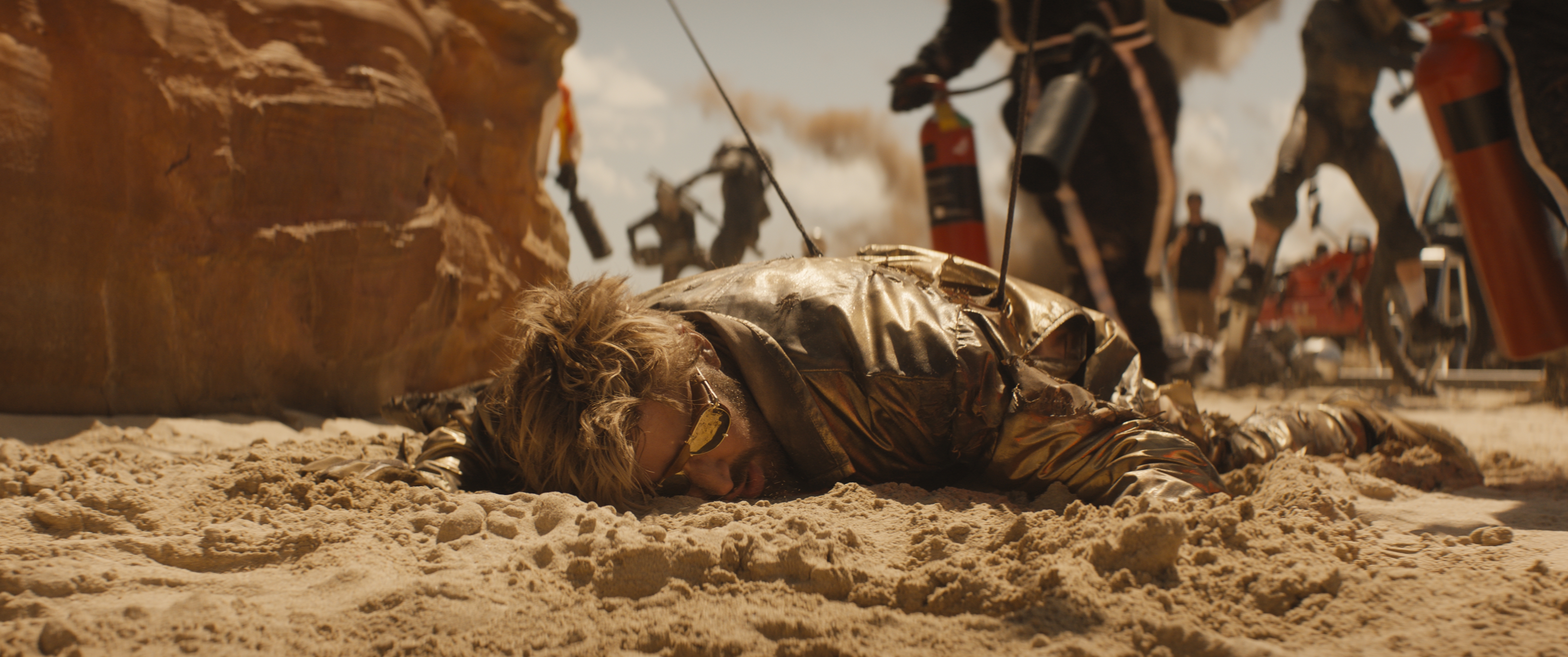
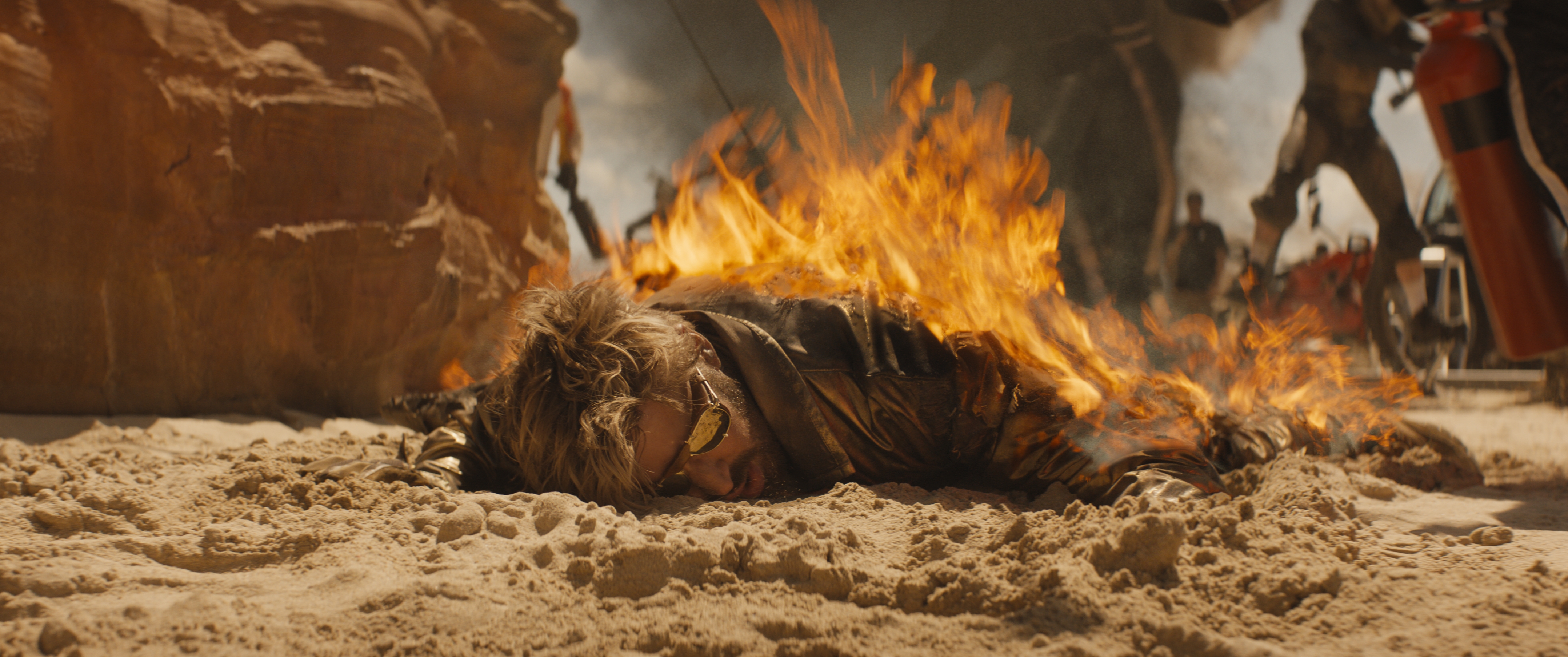
There's a lot of fire VFX in The Fall Guy, did you create a new technique or workflow for these shots?
JM: Cinesite’s work included several sequences which involved the use of fire. There was a shot where Colt has been set on fire in his role as a stunt-man, a spectacular pontoon explosion in a speed-boat chase sequence, and also a shot where Colt uses fire-breathing as a weapon to escape, when he has been taken captive.
As a VFX company, creating fire is something we have in our arsenal of skills so I would not say that there were any new techniques or workflow used, but we applied our expertise in several shots.
Can you walk us through the technology and techniques used to achieve such realistic fire effects in the film?
JM: Throughout all of our fire-related VFX, we utilised advanced computational fluid dynamics solvers and also combustion models to simulate the turbulence of the flow of gasoline, or the relevant gaseous fuel. In addition, we needed to work on the air production of the fire, which is creating the turbulence, as well as its heat release. These shots required the addition of smoke, embers and iterative fire damage onto cloth was also required for one shot.
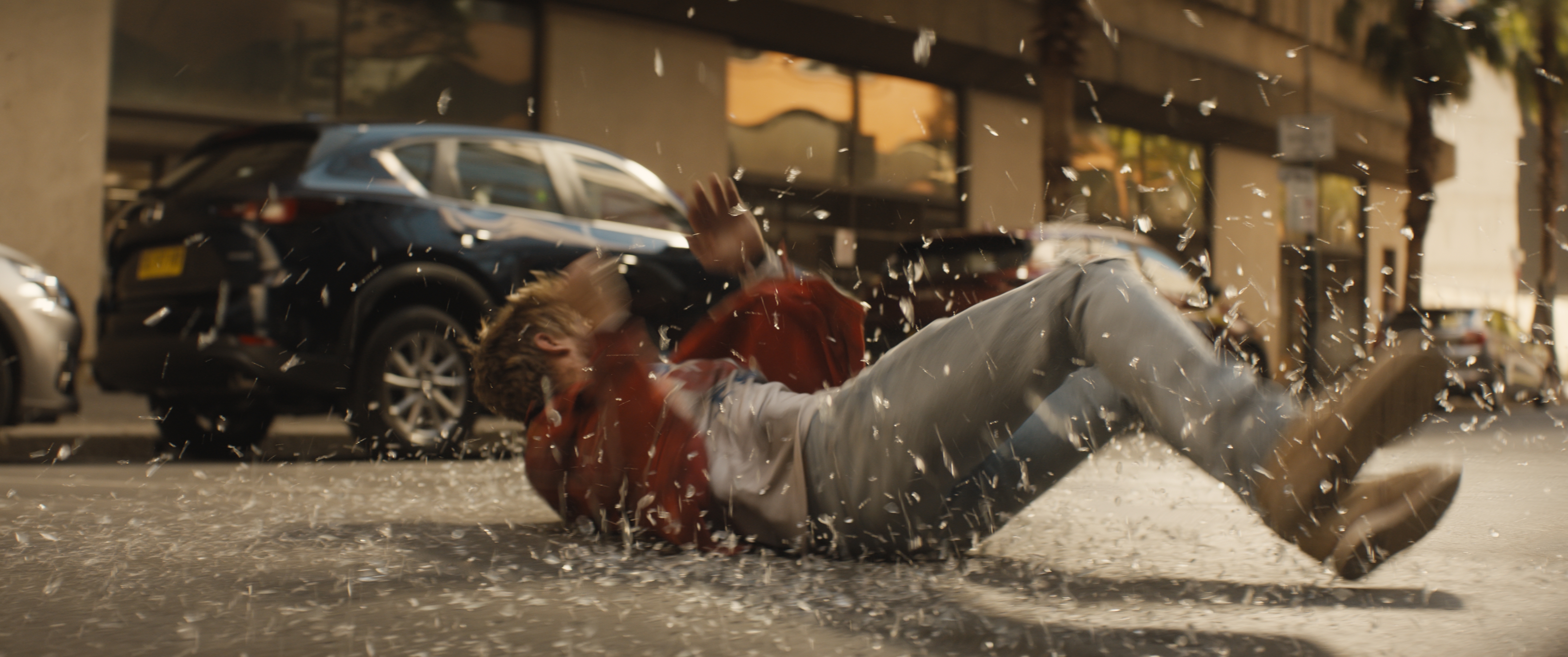
Car chases are great in the movie, did you have any past film references for the scenes?
JM: They filmed almost everything in terms of the car chases practically, so our work was very much based on the production’s cinematography. We did watch some of the original series to get a flavour of what we would be creating, but in reality, we didn’t change the structure or intent of what had already been shot.
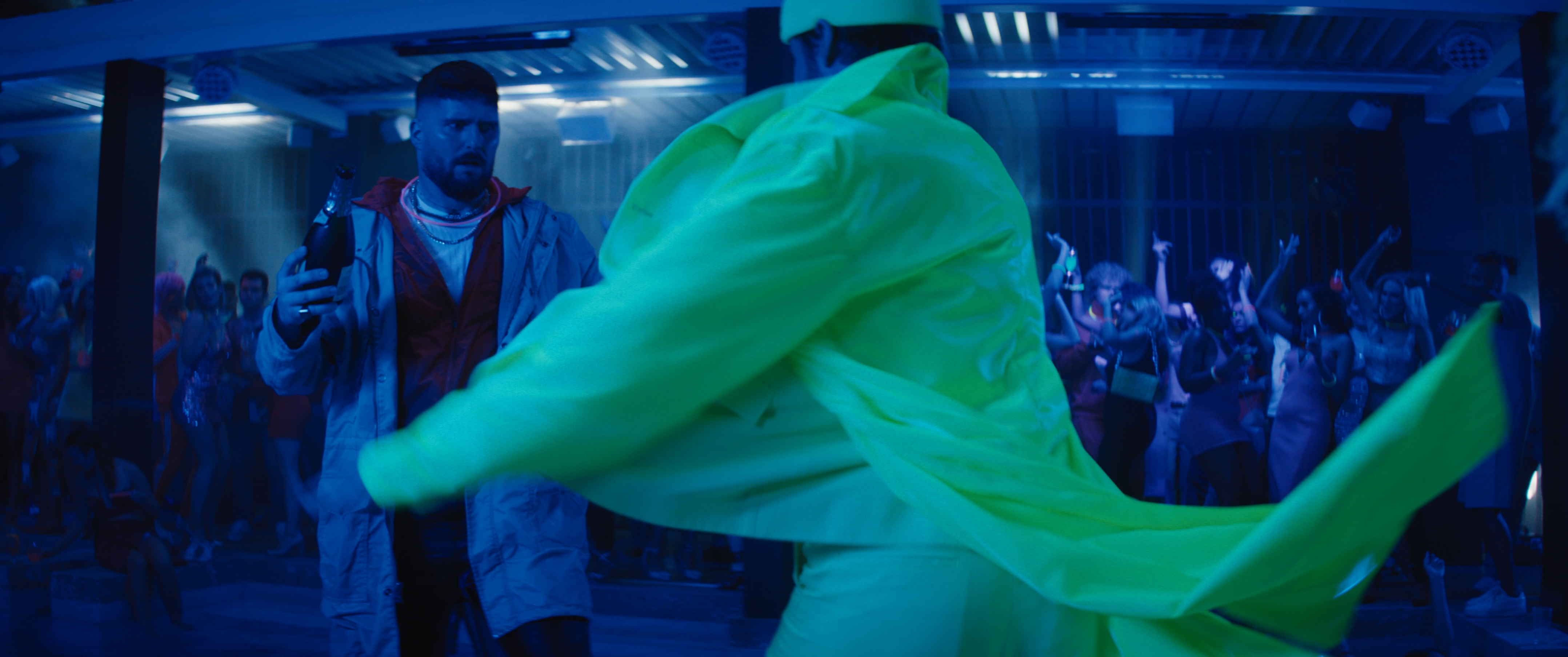
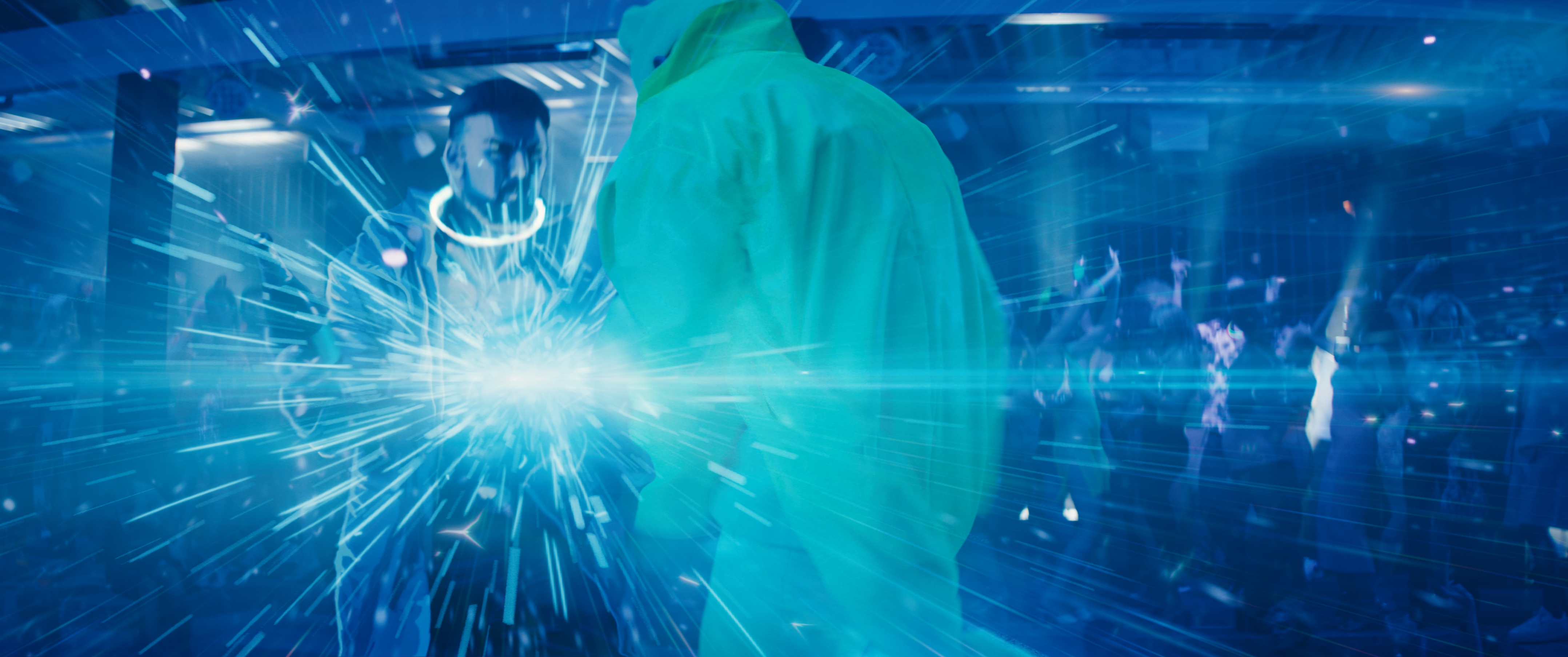
In a film about being behind the magic, did you need to approach the VFX, car chases, etc in a more realistic way, so the film's in-film shoots looked even wilder?
JM: There was one instance where we needed to consider the look of the visual effects and how far we could push that within the wider aim for realism, and that was in the night club sequence.
Colt has been given some kind of psychedelic drug, and in a fight scene we experience the action from his drug-enhanced perspective. There’s a kind of animé theme, and early on we struggled with achieving the “magical” look, with the director requesting big colour shifts and dynamic sparkle effects.
There was a fine line between creating something which might be too “magical” to be consistent with the realism of the rest of the movie, but this sequence still needed to convey Colt’s state of mind and sense of confusion in the moment.
Ultimately, we shifted the RGB channels, blended with time warps and made the slow motion visuals fluid and organic, less graphic, so there’s a realism to the punch impacts, within the wider sequence look. We added chromatic aberration to the sparkles, lens flares and the kind of optical effects which we often add in typical visual effects. It’s a magical world within a real world!
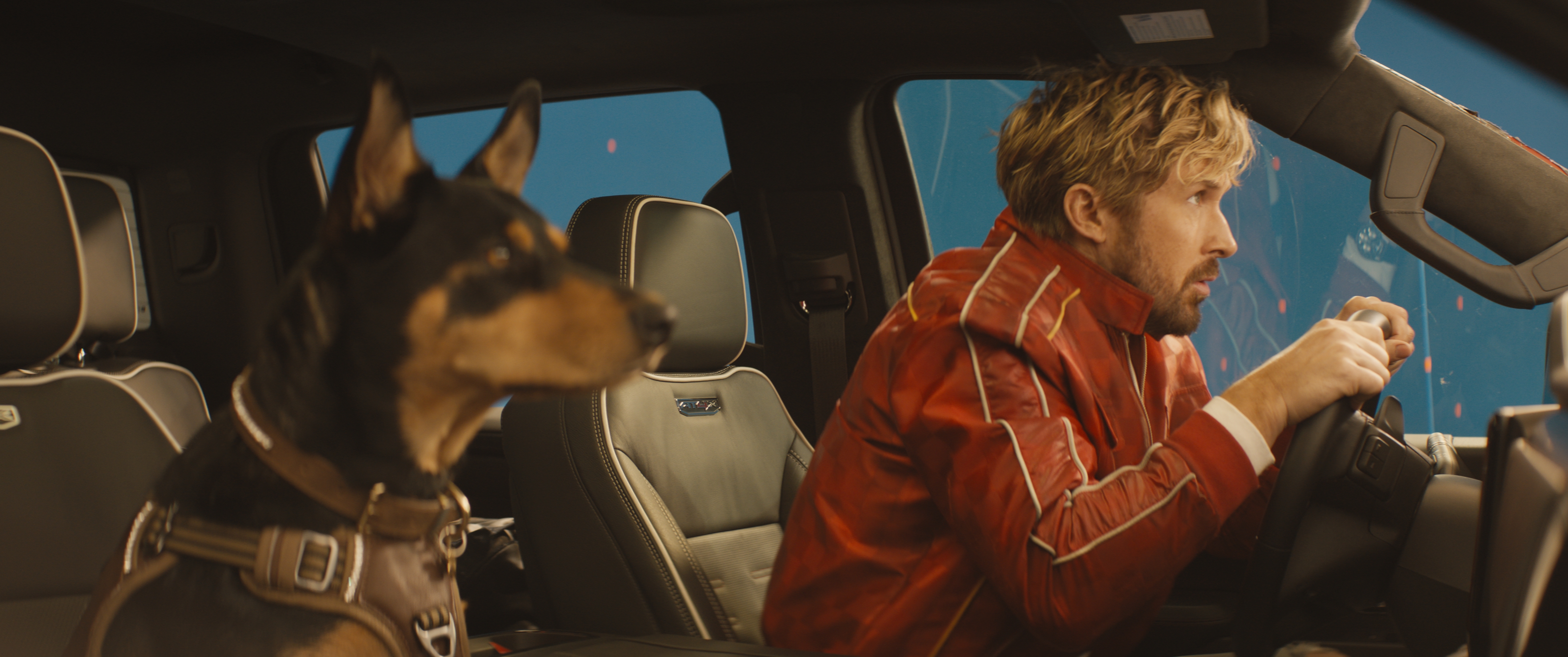
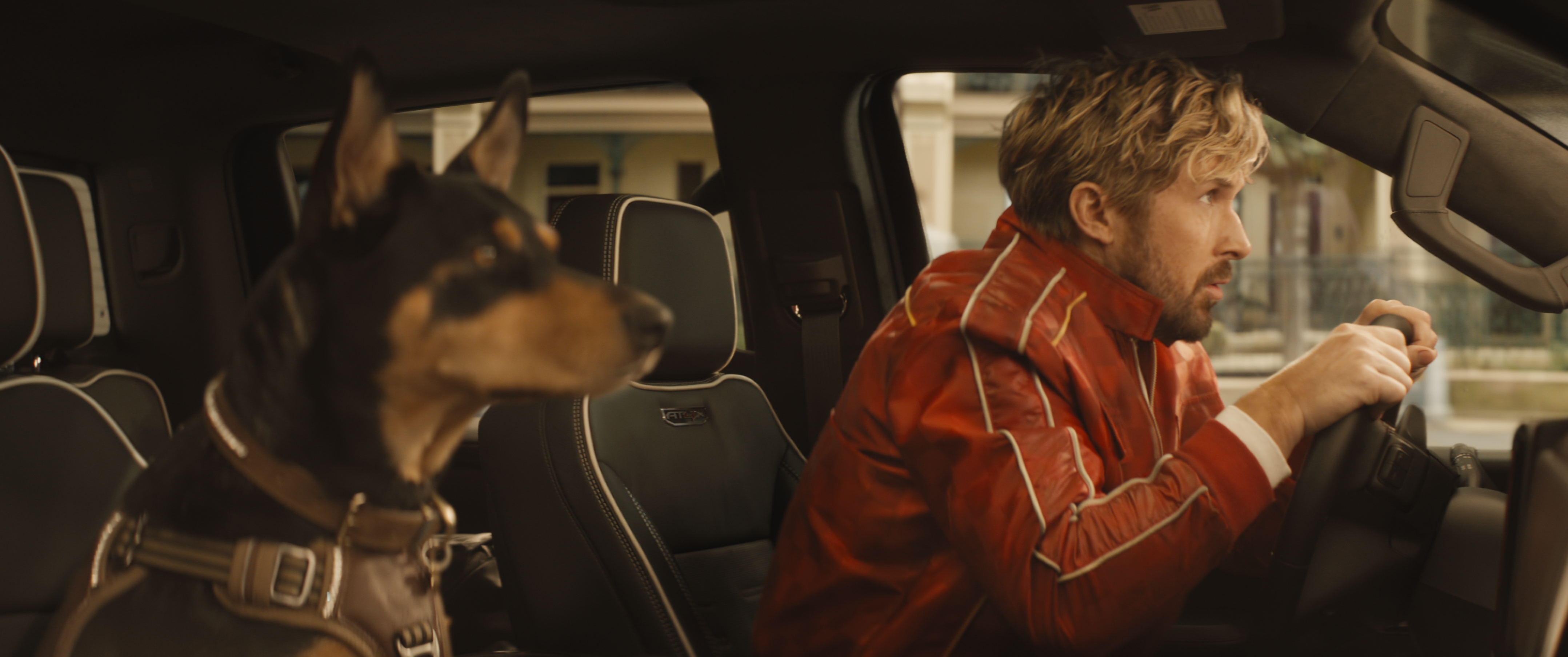
What was the most challenging scene in the film you worked on and why?
JM: As a VFX supervisor, there were several particularly memorable and complex scenes which stood out to me. The boat chase was a particularly complex and rewarding adventure.
In this sequence, Colt is being chased by some bad guys in a speedboat on the Parramatta River, beside the Sydney Harbour Bridge. He drives his boat into a pontoon in the middle of the river, causing a massive explosion.
They had captured much of the sequence as live action, but there were some shots which needed to be created almost entirely in CG, and which would be cut back to back with the live action shots.
This presented a unique set of challenges, including the need to authentically simulate water dynamics, lighting, and interactions with the CG pontoon and explosions, while ensuring seamless integration with the live action elements.
How important is it to tell a story in a VFX shot, or create a shot that enhances and doesn't distract from the scene?
JM: That’s a very good question; it’s so important. It’s one of the things which keeps me interested in working in this field, using VFX not just to be visually impressive, but to support the storytelling.
Every visual effect shot we create has a meaning that is an important part of the story telling. We need that context to understand the purpose of each shot, its wider role in telling the story.
I often ask that question about shot intention and purpose to the client up front because that is both our starting and end point; we should always be working with that vision, that story-based motivation in mind.
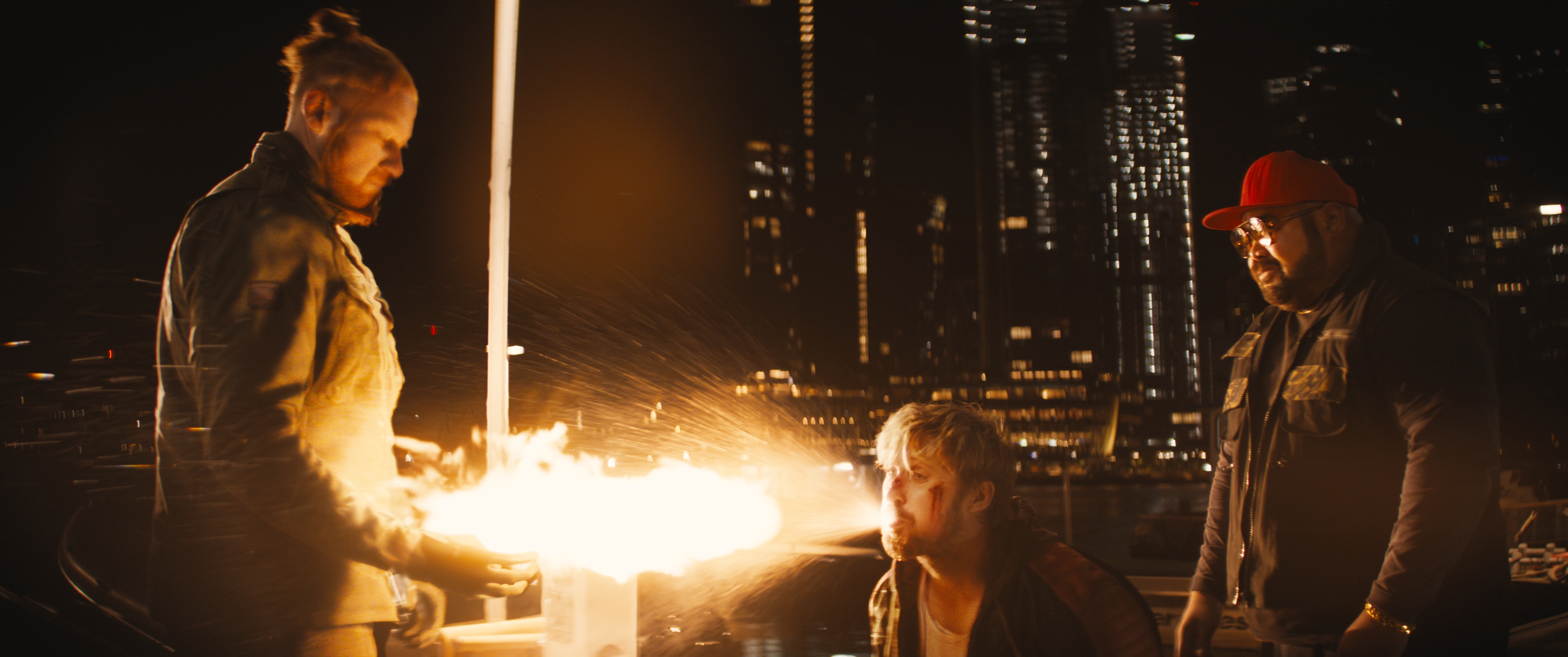
Were there any practical effects used, and did you team these with CG?
JM: The effects in The Fall Guy were weighted towards SFX and practical techniques throughout. Director David Leitch had a fascinating history of working as a stuntman before he moved into directing movies, so his intention was always to use SFX wherever possible.
One of this movie’s particular challenges was that in several shots they filmed real SFX, for example explosions, and we needed to add digital ones which are seen side by side in finished shots with the originals. That was a very good exercise for us, because there was nowhere to hide, there was a direct comparison right there in front of us for how it should look.
The audience shouldn’t be able to see the difference between the VFX and SFX, but there was always a carefully constructed combination of the two. We won director David Leitch’s trust with our digital work, but it’s important to recognise how much was shot practically.
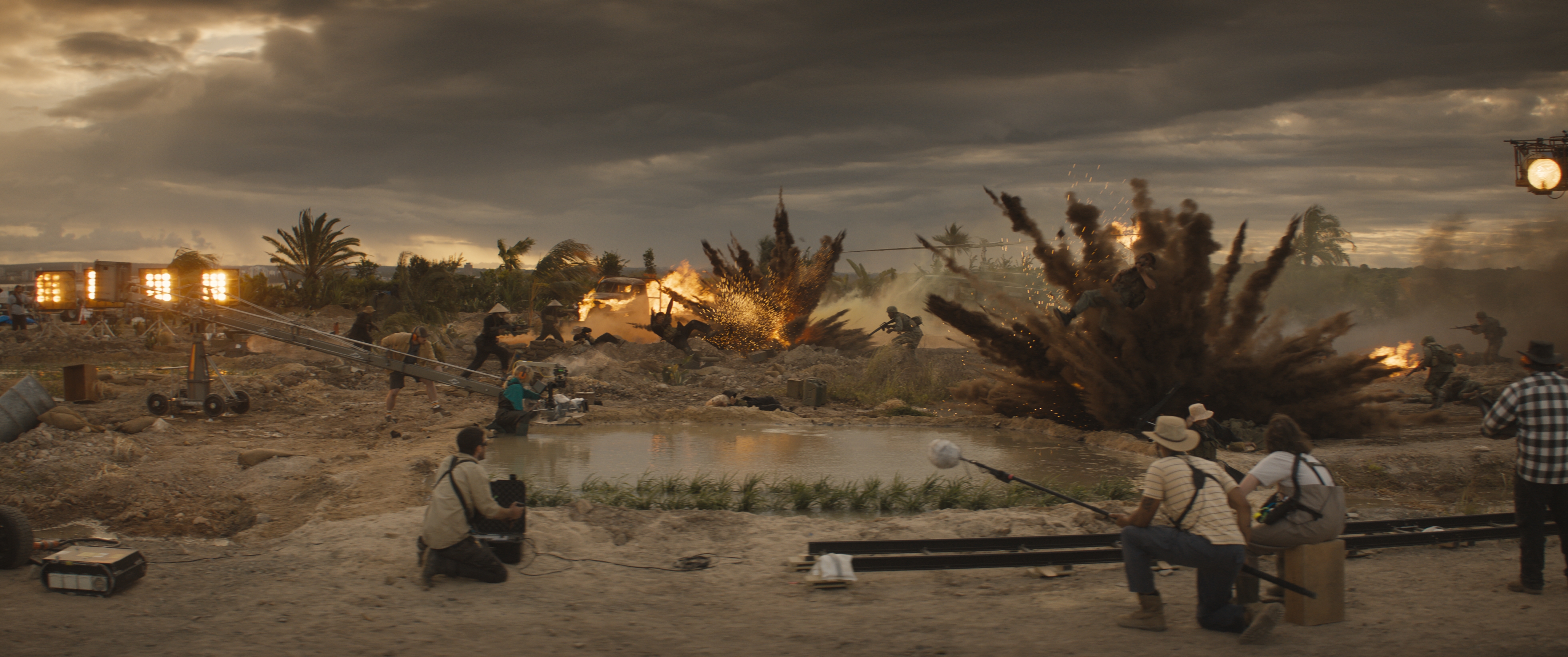
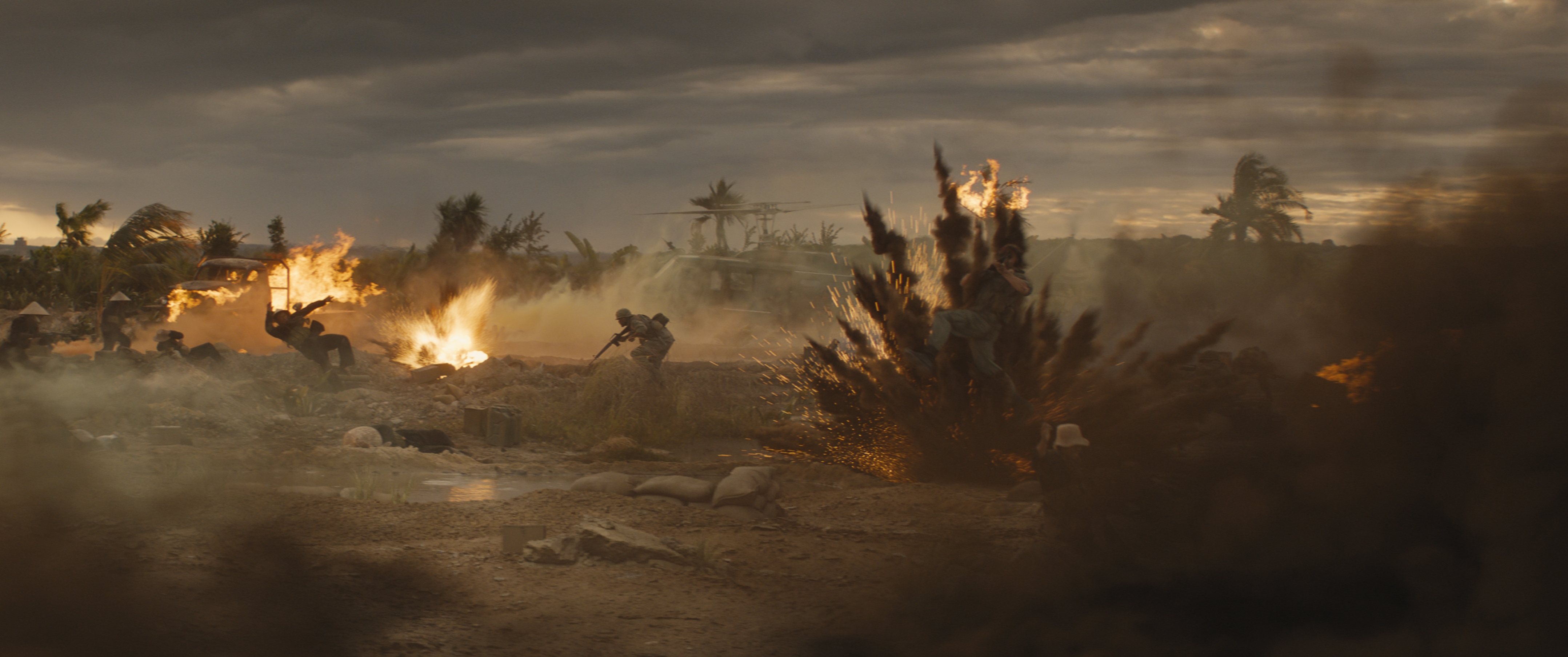
Is there a CG shot in the film that few people realise is CG?
JM: Hopefully every shot! There is one shot which might not be what viewers might expect, in terms of visual effects - a movie stunt flashback where we see Colt on a Vietnam battlefield, stepping on a land mine which launches him somersaulting into the air, before he lands in a water filled crater.
This was originally planned as a shot to be shown being filmed on the set of director Jody’s (Emily Blunt) film Metalstorm, complete with visible film crew. We enhanced the explosions and added foreground smoke, sharing it with the production for review.
They liked what we had done so much that they subsequently decided to repurpose the shot, using it as a flashback, so it was necessary for us to make several digital adjustments. These included removing the crew, who had originally been intentionally included in the shot, through various techniques including digital matte painting, clean-up, and we also reframed the shot slightly, cutting off part of the picture to make it work.
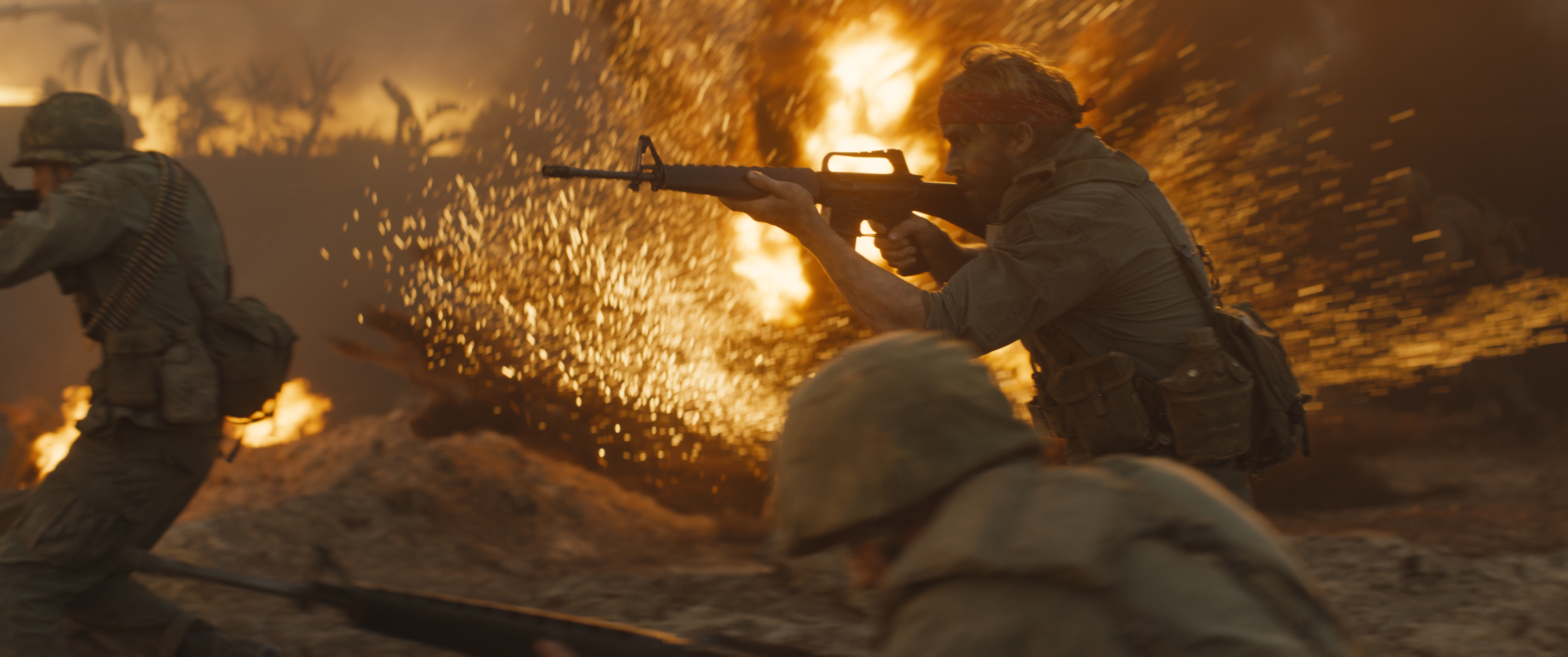
What does it take to make successful VFX shots in the modern era?
JM: First of all, I have a feeling that in this era, people look too much at video games, and I think that the result of that is becomes difficult to judge what looks real or photorealistic or not anymore.
So for me, I feel it’s important to keep away from too many video games, to avoid the influence of your eye possibly getting used to that look. I enjoy looking at art in general, fine art. I recently spent days in the National Gallery in London looking at how artists translate light into colour - because that’s so close to what we are doing in visual effects.
Photography is also very useful as a creative source. You need to look at various media because it’s important not to get too stuck on just looking at visual effects, which is only one form of visual reference, and one which every other artist working in this industry will also be looking at. You need to pull from your own photographs and your own visual life experience to fuel your work and build your creative repertoire.
I think AI will change things a lot. It’s still at an early stage, but that may alter our approach in future to creativity, but for me, I think it’s still too early to definitively say whether that will be for better or for worse. However, I’m optimistic for the future of our sector, where human creativity will still be highly valued and central to the content that we output, where AI opens new possibilities, but is firmly under the control of creative artists.
If you've been inspired, we have more VFX insights to read, including making The Creator's VFX, revealing the VFX behind Ridley Scott's Napoleon and our list of the best VFX movies of the '90s.

Thank you for reading 5 articles this month* Join now for unlimited access
Enjoy your first month for just £1 / $1 / €1
*Read 5 free articles per month without a subscription

Join now for unlimited access
Try first month for just £1 / $1 / €1

Ian Dean is Editor, Digital Arts & 3D at Creative Bloq, and the former editor of many leading magazines. These titles included ImagineFX, 3D World and video game titles Play and Official PlayStation Magazine. Ian launched Xbox magazine X360 and edited PlayStation World. For Creative Bloq, Ian combines his experiences to bring the latest news on digital art, VFX and video games and tech, and in his spare time he doodles in Procreate, ArtRage, and Rebelle while finding time to play Xbox and PS5.
